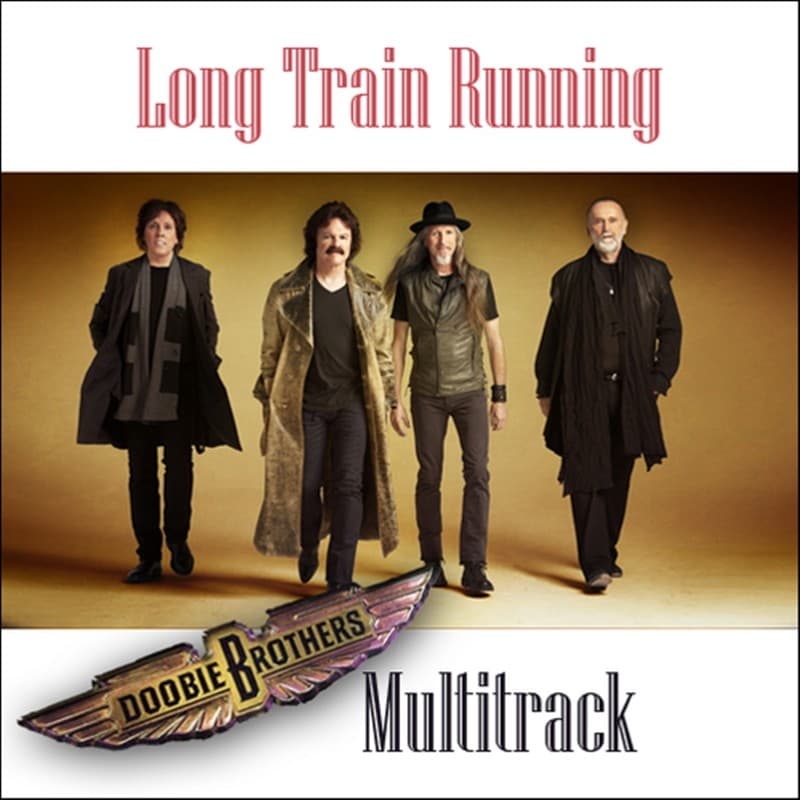
“Long Train Runnin’” – A Groovy Ride with The Doobie Brothers
The Doobie Brothers hit their stride in the early 1970s, and one of their most beloved tracks, “Long Train Runnin’,” encapsulates everything that made the band so successful. Released in 1973 as part of their The Captain and Me album, the song quickly became a radio staple and climbed to No. 8 on the Billboard Hot 100, cementing the Doobie Brothers’ place as one of the decade’s premier rock bands. It’s a track brimming with groove, energy, and a distinctive rhythm that set it apart from other rock songs of the era.
Written by Tom Johnston, the band’s lead vocalist and guitarist, “Long Train Runnin’” is a song that came about almost accidentally. Johnston had been jamming on its signature riff for years before finally developing it into a full track, at the urging of the band’s producer, Ted Templeman. Originally, the song was an instrumental, but once the decision was made to turn it into a fully realized song, it evolved into something far more than just a riff.
What makes “Long Train Runnin’” so captivating is the rhythm. The song’s driving, percussive groove immediately grabs the listener’s attention. It features Johnston’s funky, muted guitar riff that interlocks with Michael Hossack’s and John Hartman’s syncopated drum beats to create a smooth, yet propulsive rhythm. The rhythm is further complemented by the distinct harmonica licks that flow in and out, adding a layer of bluesy swagger. This groove-heavy foundation gives the track a laid-back vibe, but there’s still a sense of forward momentum – like the “long train” in the title, the song seems to keep chugging along relentlessly.
Lyrically, “Long Train Runnin’” may not be as straightforward as some of The Doobie Brothers’ other hits. Its central image of a train serves as a metaphor for the unstoppable forces of life and love. The repeated refrain, “Without love, where would you be now?”, suggests that, like a train that runs endlessly, life can keep moving forward, but without love, it loses direction and meaning. The lyrics may be simple, but their universality is what makes them resonate with listeners across generations.
One of the highlights of the song is Tom Johnston’s vocal delivery. His voice is soulful and gritty, matching the raw, funky feel of the instrumentation. There’s a certain urgency in the way he sings that gives the song its edge, making the chorus feel like an emotional release. The interplay between his vocals and the background harmonies from the rest of the band creates a dynamic tension that keeps the listener engaged throughout.
While the guitar riff is undoubtedly the backbone of the song, “Long Train Runnin’” also showcases The Doobie Brothers’ talent for blending different genres. The song’s rock foundation is infused with elements of funk, blues, and R&B, making it stand out in the band’s catalog. This genre-blending approach was a hallmark of The Doobie Brothers’ sound, helping them appeal to a wide audience during the 1970s. The song’s infectious groove made it a hit on both rock and pop charts, as well as a favorite in dance clubs, where its rhythm and beat became irresistible.
Interestingly, the song also played a pivotal role in shaping the band’s sound going forward. While “Long Train Runnin’” was a hit on its own, it also marked a transition period for the band. Michael McDonald would later join The Doobie Brothers and lead them into a more R&B and pop-oriented direction, but “Long Train Runnin’” served as a blueprint for that eventual evolution. The song’s funky, rhythm-driven approach laid the groundwork for the more polished, soul-inflected sound the band would adopt later in the decade.
In live performances, “Long Train Runnin’” became a showstopper, with its extended jams and improvisational sections showcasing the band’s musicianship. Johnston’s guitar riff, in particular, would often stretch out into long solos, while the percussion section would take center stage, creating a euphoric, danceable vibe that kept audiences on their feet. The song’s energetic, groove-centric nature made it a perfect fit for the festival circuit, where The Doobie Brothers built much of their reputation as a premier live act.
Over the years, “Long Train Runnin’” has become one of The Doobie Brothers’ signature songs. It has been covered by numerous artists and remains a staple of classic rock radio. Its enduring popularity is a testament to the timeless appeal of its rhythm, melody, and message. Whether you’re listening to it on the radio, at a concert, or on a vinyl record, “Long Train Runnin’” never fails to deliver that irresistible groove that gets you moving.
For a song that started out as a mere riff, “Long Train Runnin’” has traveled a long way. It’s a reminder of the power of persistence – how even the simplest musical idea can evolve into something lasting and profound. Just like the train in the song, it keeps rolling, decade after decade, without ever slowing down.